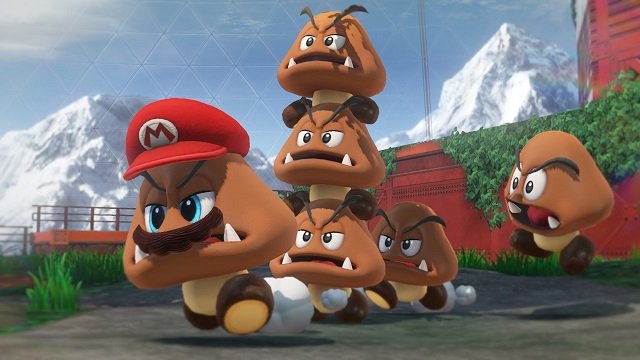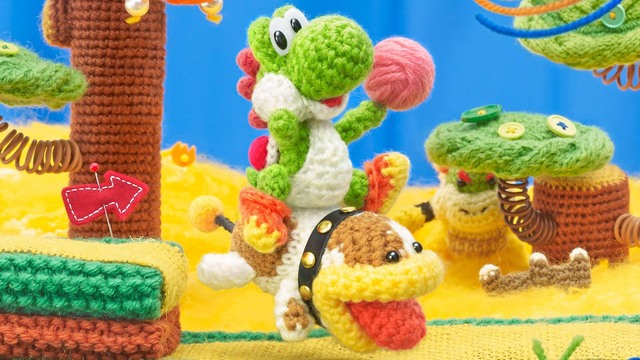Pretty much everyone has played a Nintendo platformer. It’s something that crosses generations if you ask people if they’ve ever played a Mario game, a Kirby game, the new Yoshi’s Crafted World, or even a Donkey Kong Country game, you’ll get at least one “yes” answer. Nintendo has been making platformers for as long as many players have been alive, and for the longest time, the console maker has focused on making its signature style of game fun, inventive, and approachable for everyone. Although this has had a troubling side effect over the past decade as most of the recent releases have been far too easy.
That’s slightly hyperbolic, because there is challenge to be found in Nintendo platformers, and there’s no doubt already someone in the comments pointing out how wrong that statement is. Games like Donkey Kong Country have proven that Nintendo can put out a platformer with some real grit to it. But that’s definitely not the company’s overall MO, which is something you’ll know if you’ve played Yoshi’s Woolly World, or one of the excellent, yet simple, Kirby platformers on the Nintendo 3DS.
But Nintendo too often makes you work to find the difficulty in these games, if they include any real challenge at all. It’s a philosophy that makes perfect sense on paper, but in practice overestimates the patience of gamers. There’s a reason so many people complain of their gaming backlog of games they bought and barely played. If a game can’t hold your attention from the beginning, it might not get another chance, and that’s why Nintendo needs to step up its approach to difficulty.
Jump physics

When Nintendo makes a new platformer, it is not asking about how it can ramp up the challenge for its players, but are instead asking what kind of new gameplay opportunities it can experiment with. When the New Super Mario Bros. level designers sit down and make their levels, they’re thinking of new obstacles for Mario and his pals to navigate around or over, not how to make the level intensely difficult and frustrate the player. The same goes for Yoshi’s Woolly World and Yoshi’s Crafted World.
This changes how Nintendo makes levels as the question asks how new aesthetic affect gameplay not necessarily how hard each stage can be. Wool can be squashed, knitted, and reformed, while a world made of arts and crafts means obstacles made out of a tin will be susceptible to magnets. These worlds represent new gameplay challenges and mechanics, not challenges to the player’s reflexes.
Nintendo has decided to release direct sequels with overt challenges, though. Super Mario Bros. 2 was a direct sequel to the first back on the Famicom in Japan, complete with the same graphics as the original, but it was far more difficult. Internationally, we got a reskinned version of Doki Doki Panic with Mario characters. The original version was later released as The Lost Levels, but it is certainly not held in the same regard as the original, or the international version.
The same goes for New Super Luigi U, the far more difficult alternate mode of New Super Mario Bros. U. It was originally DLC released on an underperforming console, and even though it’s included in New Super Mario Bros. U Deluxe, it is seldom mentioned. Nintendo has tried just making harder platformers, and it hasn’t gone as well for them.
So then the company tries to appeal to both the less experienced fans and its long-time audience that wants more difficulty in their games. Nintendo has done this in two ways: by offering alternate, easier, characters to play as in-game and giving players a whole host of new challenges after the primary game has been completed.
Super Mario Odyssey might not be a 2D platformer, but it’s the perfect example of this. After the main game has been completed, Mario will be tasked with playing remixed versions of earlier stages without Cappy, offering a far steeper challenge than anything that came before.
Gravity

But how many players are actually getting to that point, where they’ve finished the story, gotten a majority of the stars, and are then moving onto those difficult, challenging levels? They’re definitely rewarding, and completing any of them is satisfying as hell, but only the most dedicated players willing to put in the hours can get there. Meanwhile, many more players who would’ve loved that challenge already gave up hours beforehand, tired of collecting simple moons for much of the game. Nintendo wants to offer a game that everyone can enjoy at the beginning, and leave the big challenges for the hardcore fans, not realizing that many of the hardcore fans might switch off before even getting there.
Nintendo’s harder platformers gave a sense of satisfaction that even good games like the aforementioned easier titles don’t have. And even if these games do have harder modes, they’re usually behind some sort of wall or in another part of the game. As Capcom has showed, it’s possible to please both new and old audiences by making an array of difficulties available right from the start so people can pick their preferred experience. Many games with storied histories struggle with pleasing hardcore old fans and newcomers but if any company could appease both crowds, it’s Nintendo.
It’s hard to keep plowing through platformers, jumping over the same enemies, time after time. Yoshi’s Crafted World has environments that look captivating and wonderful, with little touches that show the developers care. But playing through it feels like a sightseeing tour and not an exciting or engaging gameplay experience, which is the same problem so many Nintendo platformers have.







